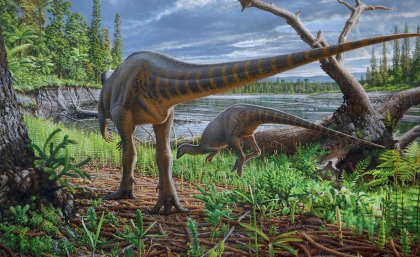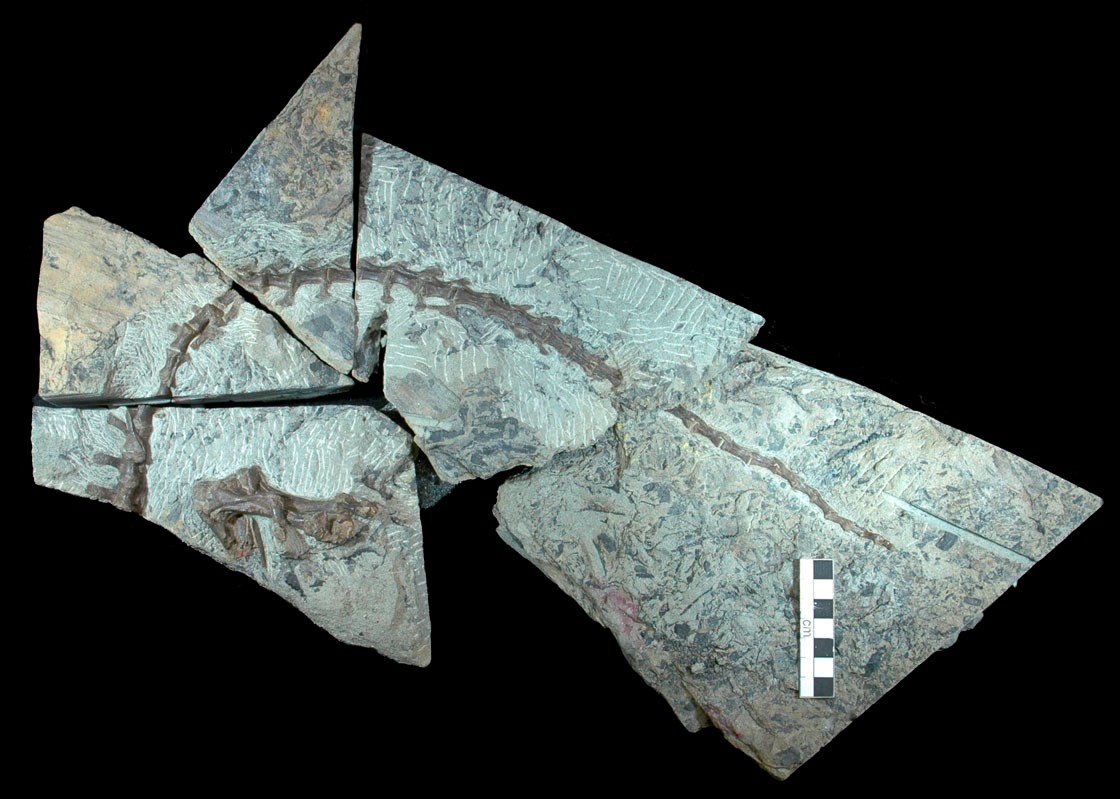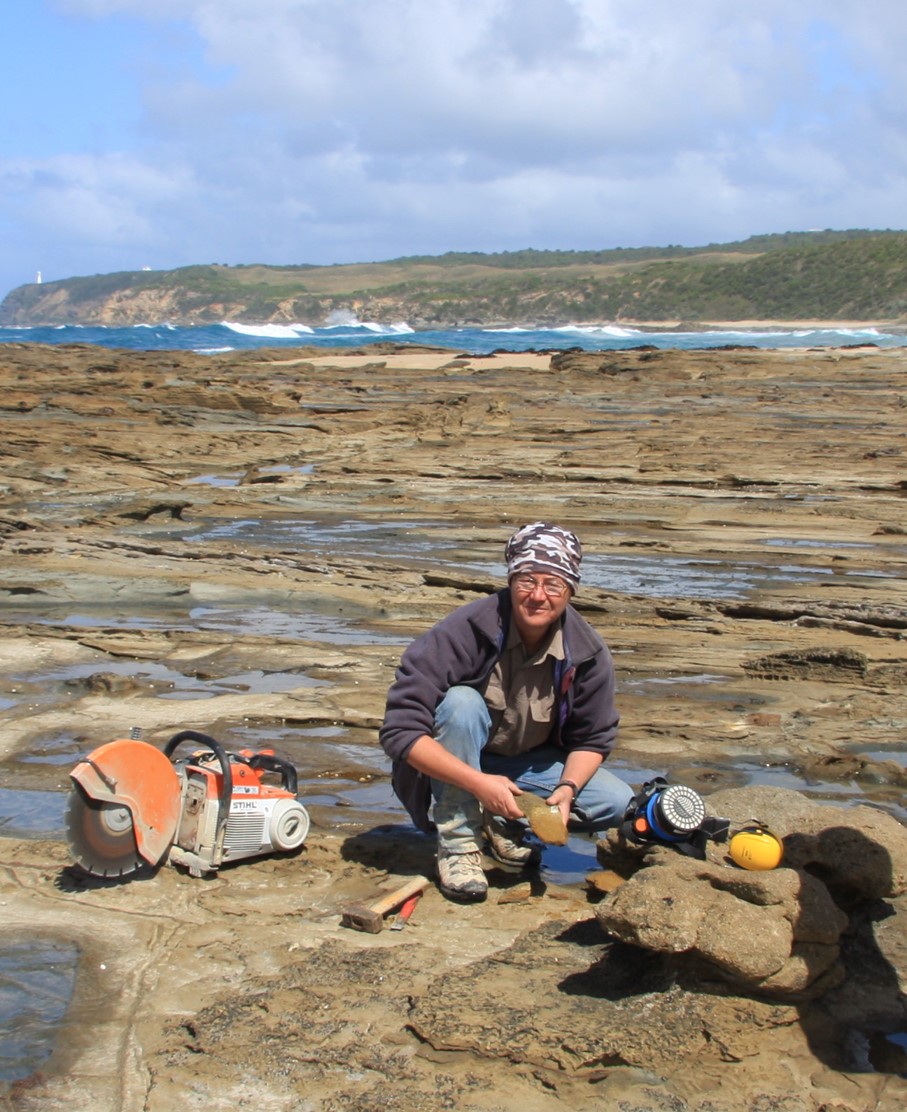
A dinosaur species discovered a decade ago in south-eastern Australia is giving fresh insight into the diversity of dinosaurs that inhabited the Australian-Antarctic rift valley.
University of Queensland School of Biological Sciences alumnus Dr Matt Herne and colleagues describe the turkey-sized herbivore for the first time in an international journal published today.
The species was identified from fossilised tail and foot bones found in 113-million-year-old rocks that form a sea platform near Cape Otway in Victoria.
Dr Herne said the new dinosaur had been named Diluvicursor pickeringi (pronounced di-loovy-cursor pickering-i), meaning Pickering’s flood-running dinosaur.
“Diluvicursor shows for the first time that there were at least two distinct body-types among closely related ornithopods ̶ small, two-legged grazing dinosaurs ̶ in this part of Australia,” he said..
“One called Leaellynasaura was lightly built with an extraordinarily long tail, while the other – Diluvicursor – was more solidly built, with a far shorter tail.”
 “Our preliminary reconstruction of Diluvicursor’s tail muscles suggests this dinosaur had powerful leg retracting muscles and was most likely a good runner.”
“Our preliminary reconstruction of Diluvicursor’s tail muscles suggests this dinosaur had powerful leg retracting muscles and was most likely a good runner.”
Dr Herne said the discovery highlighted the extraordinary diversity of dinosaur species in the ancient rift valley that existed between Australia and Antarctica.
Sea erosion over millennia has exposed fossils in wave-cut rock platforms around the Otway coast.
Volunteer prospector George Caspar discovered the skeleton of Diluvicursor pickeringi in 2005.
The fossil was buried along with flood-transported tree stumps, logs and branches in deep scours at the base of what was once a powerful river.
“The Diluvicursor pickeringi carcass appears to have become entangled in a log-jam at the bottom of this river,” Dr Herne said.
“The Diluvicursor skeleton was discovered in 2005, but it’s taken this long to fully understand the geology of the area where it was found, and also Diluvicursor’s relationships.
 “Much of the fossil vertebrate material from this site has yet to be described, so we hope to discover further dinosaur species, specimens and other exciting animals there.
“Much of the fossil vertebrate material from this site has yet to be described, so we hope to discover further dinosaur species, specimens and other exciting animals there.
“Understanding the ecology of these dinosaurs — what they ate, how they moved, where they roamed — based on the interplay between anatomy and the environment presents exciting challenges for future research.”
The species name honors the late David Pickering, who was Museums Victoria’s Collection Manager, Vertebrate Palaeontology.
The Melbourne Museum plans to put the Diluvicursor specimen on public display.
UQ experts Dr Steven Salisbury and Dr Vera Weisbecker were involved in the research, along with UQ PhD student Jay Nair and Monash University researchers.
The study is published in Peer J.
Images: (Above left) The holotype partial skeleton of Diluvicursor pickeringi after it was prepared from several blocks of sandstone by Monash University's Lesley Kool. The fossil preserves most of the tail along with the right ankle and foot. Image: Steve Poropat and Museums Victoria. (Above) The late David Pickering on the coastal shore-platform near where Diluvicursor pickeringi was discovered. Image: Matt Herne.
Contact: Dr Matt Herne, ornithomatt@gmail.com, +61 (0) 438 099 285; Dr Steven Salisbury, s.salisbury@uq.edu.au, +61 7 3365 8548.
.jpg)











